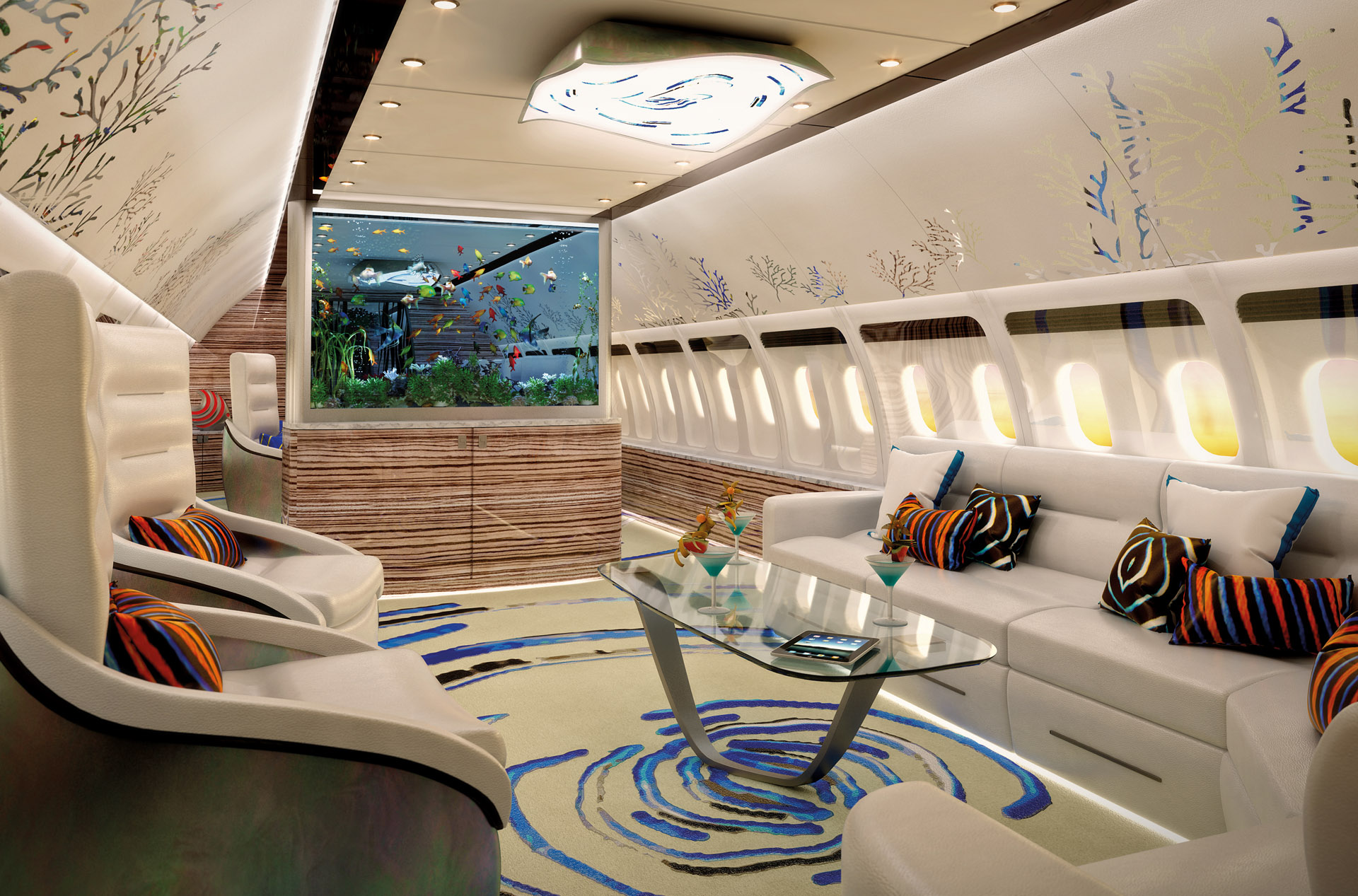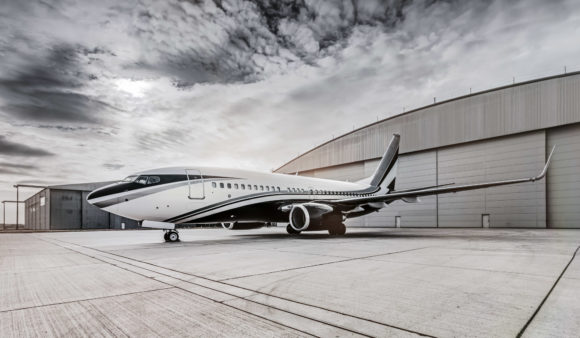Private jet owners are ultimately looking for a seamless experience between the house, the office and the aircraft.

One of the main considerations when designing a private jet interior is the space arrangement. Working with such a relatively confined space, every inch counts to ensure that optimum levels of enjoyment and relaxation can be achieved during every flight. Jean-Pierre Alfano, creative director of Airjet Design, says,
“The key element for good design in a large aircraft cabin, for example, starts by defining a space layout that will make the passenger experience, social interaction, and ease of movement a pleasant one. It is a compromise between giving the passenger a sensation of comfort and luxury without giving away too much cabin space. For this, we combine a good layout design with the right combination of colours, materials, and lighting.
“The environment of an aircraft is very unique and very different from any other kind of space interior designers typically work on. The living space inside most aircraft is usually rather small with a fixed cylinder shape and limited natural light sources. As a consequence, the initial design requirements for an aircraft are very demanding because at the end of the design process the passenger has to feel good within the cabin environment and forget about the very nature of its limitations.”
Additionally, weight limitations, possible flight turbulence and airworthiness regulations have to be taken into consideration during the design process. This leads to technical solutions and material choices that are very demanding and only seen in aviation.
“We use a range of luxury materials, which are for the most part aviation certified,”
explains Mr Alfano.
“For example, certain clients want custom-made silk rugs, the finest leathers, beautiful marquetry, and bespoke lighting fixtures.”
As for colour schemes, many of Airjet Design’s clients favour a combination of light colours with darker trim accents. However, there are many colour possibilities, sometimes influenced by the cultural background of the owner but it seems that the most important thing is to maintain a balance in the colour choices. Flying fish Airjet Design’s most unusual design to date is its ‘Acquario’ project, where the company was asked to design a fish tank in an aircraft.
“The aquarium served as the central piece of the interior,”
says Mr Alfano,
“and was fitted with filtering and heating systems, built on a credenza mechanism that allowed for maintenance.”
He believes that the greatest change in the design of private jet interiors over the years is the move in the direction of styles that brings the overall look closer to that seen in residential or hotel design.
“Clients favour having a private jet with an environment that comes as close as possible to the comfort and style available in homes or hotels. As a result, today we see more furniture (or ‘monuments’ as they are known in the industry) with forms that resemble free standing furniture or home furnishing. We also see more creative surface textures than before, as well as mood lighting.
“Private jet interior design will follow the evolution we see in other industries, some of which our clients are influenced by, as are we, such as yachts, cars, and hotels. From my point of view, I will continue to inject innovation, in terms of forms, materials and layouts wherever possible and depending on my inspiration. The design will continue to be influenced as well by the demand for the latest technology. In the end, private jet owners are ultimately looking for a seamless experience between the house, the office and the aircraft.”
Airjet Design
www.airjet-designs.com
Designed for purpose
Another important point to consider is how the owner intends to use the aircraft. Will it be to travel with family, for business, leisure or a combination? Sam Curson, senior project manager in aviation for Winch Design, advises that this can quickly help to define the general layout of an aircraft that will suit the client. After that, it’s entirely how the designer interprets the owner’s desires.
“For practicality,”
he says,
“a lighter interior with white and cream fabrics can be quite tricky to maintain, whereas darker leathers and woods can withstand more intense usage. With a VVIP aircraft the colours and materials should be more for the owner to enjoy, not necessarily for the crew to easily maintain, but we will always look to strike a balance to ensure the aircraft looks beautiful for every flight.
“Natural materials like silks, cottons and linens are preferred for fabrics as these are more friendly to burn testing, but fire resistant coatings, resins and backings have greatly increased the potential to use more interesting materials like carbon fibre, solid woods and elaborate artistic finishes. Likewise, fabrication technologies have advanced in such a way as to allow us to design with solid woods, marbles and other transparent or opaque stones, these can be milled down to between 1mm and 6mm thicknesses and used on floors or cabinetry.
“The texture and warmth of real wood or the cold touch and crystalline surface of natural stone is simply impossible to imitate. We’ve just installed the largest single piece of marble marquetry on a BBJ entry rotunda floor, but we’ve also built aircraft seats with incredibly intricate, sculpted carbon fibre shells.”
Mr Curson has noticed a greater focus on natural light in the cabin over recent years.
“Many owners of larger VVIP aircraft desire an interior that is more comfortable and residential and less like a flying sports car,”
he says.
“As to the future, I think with the available advanced technologies privately owned aircraft interiors will start to have much more individuality in interior style and architecture compared to before.”
Winch Design
www.winchdesign.com





